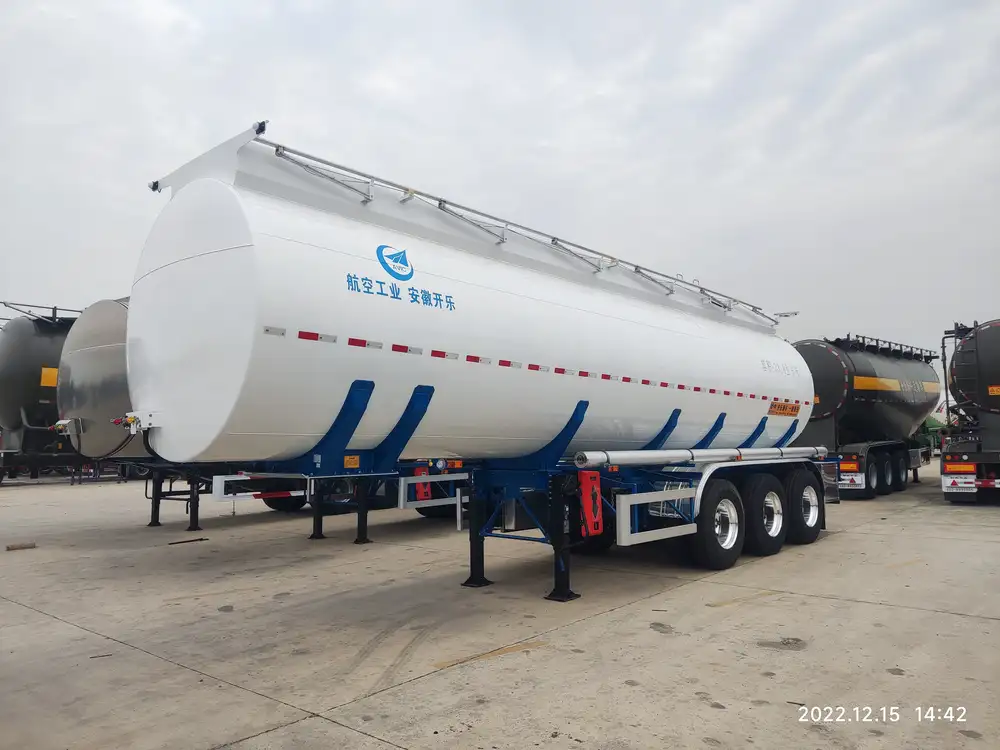In the world of logistics and transportation, understanding the specifications of semi trucks and trailers is crucial. This guide delves into the average dimensions of semi trucks and trailers, providing valuable insights for fleet managers, logistics coordinators, and trucking enthusiasts alike.
Understanding the Anatomy of a Semi Truck and Trailer
Before diving into specifics of dimensions, it’s important to clarify the components involved in a semi truck and trailer.
| Component | Description |
|---|---|
| Tractor | The front part of the semi truck, often referred to as the “cab,” that houses the engine and the driver. |
| Trailer | The rear part of the vehicle that carries goods. It connects to the tractor through a fifth wheel coupler. |
This combination forms the basis of most freight transport methods today. Now, let’s explore the average lengths involved.
Average Dimensions: Semi Truck

Overall Length
The standard length of a tractor (semi truck) ranges from 20 to 25 feet. When you add the trailer, the combined length expands significantly.
Height and Width
- Height: Typically around 13.5 feet to comply with road regulations across the United States.
- Width: Standard width for most semi trucks is approximately 8.5 feet.
Average Dimensions: Semi Trailers
When discussing trailers, it is essential to recognize that different types serve various purposes, each with distinct average lengths.

Types of Trailers
Here’s a breakdown of some common trailer types with average dimensions:
| Type | Average Length | Typical Use |
|---|---|---|
| Flatbed Trailer | 48 to 53 feet | Transporting heavy machinery & large items |
| Dry Van Trailer | 48 to 53 feet | General cargo and shipping boxes |
| Reefer Trailer | 48 to 53 feet | Refrigerated goods, perishables |
| Tanker Trailer | 40 to 50 feet | Liquid transport (fuels, chemicals) |
| Lowboy Trailer | 48 to 60 feet | Heavy equipment, oversized loads |
Total Length When Combined
The combined length when you connect a standard semi truck to a trailer generally ranges from 70 to 80 feet. However, federal regulations allow for combinations to reach up to 84 feet under specific guidelines.
Legal Limits for Length
Understanding the legal constraints is vital for those operating in this industry. Each state and region may have different regulations. Here’s a general summary:
| Type of Combination | Maximum Length | Remarks |
|---|---|---|
| Interstate Highways | 80 feet | Commonly accepted length |
| State Highways | Varies by state | Some allow longer combinations |
| City Streets | 50 to 60 feet | Restrictions often apply |

Factors Influencing Length Decisions
Several factors influence how long a semi truck and trailer can be, including:
Regulatory Guidelines: Each state has specific laws that govern vehicle lengths, affecting how freight moves across borders.
Payload: The type of cargo being transported dictates the need for specific types of trailers which in turn affects the overall length.
Route Conditions: Urban areas may have more restrictive length guidelines due to road conditions and infrastructure.
Fleet Needs: Fleet managers must balance the need for efficiency (in terms of cubic capacity) with compliance to regulations.
The Evolution of Semi Trucks and Trailers
It’s intriguing to witness how the dimensions and capabilities of trucks and trailers have evolved over the years. Advancements in engineering and design have allowed for:
Increased Lengths: More efficient designs now maximize available lengths to transport larger loads without compromising safety.
Aerodynamic Enhancements: Streamlined truck and trailer shapes reduce drag, improving fuel efficiency, ultimately resulting in longer trips with heavier loads.
Modular Options: With the introduction of dual or triple trailer configurations, logistics can dramatically impact the efficiency of transport.
Implications for the Transportation Industry
Understanding these lengths holds economical significance for the transportation sector:
Fuel Efficiency: Longer, more aerodynamic vehicles can yield better fuel consumption rates, impacting the bottom line positively.
Capacity Maximization: Utilizing the maximum lengths enables companies to haul more goods per trip, reducing operational costs.
Infrastructure Planning: City planners need to understand and account for these lengths when designing highways and urban transport systems.

Conclusion: The Importance of Understanding Semi Truck and Trailer Lengths
As the logistics industry continues to expand and evolve, recognizing the implications of semi truck and trailer lengths goes beyond mere numbers. It determines operational efficiency, regulatory compliance, and safety. From fleet managers to drivers and city planners, the importance of these metrics permeates various layers of the transport infrastructure.
Staying well-informed about average lengths and their legal boundaries, considering the evolving designs, helps to not only enhance efficiency but also ensures a safer transit system for all involved.
In summary, the nuances around the average lengths of semi trucks and trailers underscore the complexity of the transportation industry and call for ongoing attention and adaptation to continue thriving in a competitive market landscape.



